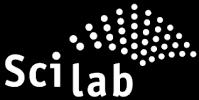Instructor |
Adj. Prof. Vladimir Skvortsov |
Phone |
032-626-1212 |
vlad at sunykorea.ac.kr or vladimir.skvortsov at stonybrook.edu (be sure to include ”[CSE564]” with no spaces, in the subject line of any e-mail message you send to me) |
|
Office |
Building B, room 409 |
Office Hours |
TBA. Office hours are only held when classes are in session. |
Calendar |
See the course syllabus for a list of textbooks, grading, a tentative schedule of topics, as well as the deadlines for all assignments |
Lectures |
See the academic calendar |
Course Information
Visualization plays an increasingly important role in the understanding of the massive data that are nowadays being collected in almost any domain – science, medicine, business, commerce, finance, social networks, and many more. As such, visualization is often deeply integrated into the analytics tools developed for data science. This course will discuss both foundations and applications of this emerging paradigm known as visual analytics. It will begin with the basics – visual perception, cognition, human-computer interaction, the sense-making process, data mining, computer graphics, and information visualization/It will then move to discuss how these elementary constituents are coupled into an effective visual analytics pipeline that allows humans to interactively reason with data and gain insight.
Objectives
-
This course emphasizes a “hands-on” approach to the better understanding of scientific information visualization concept / theory / algorithms and the effective utility of scientific/information visualization techniques in various computing applications.
-
Provide graduate students a comprehensive knowledge on scientific/information visualization concepts, theory, algorithms, techniques, and applications for data acquisition/simulation procedures, data modeling techniques, commonly-used conventional visualization techniques, visualization and rendering processes, visualization of 2D, volumetric, higher-dimensional, and time-series datasets, human-computer interactions, and other key elements of visual computing.
-
Demonstrate the significant role of these mathematical and computational tools and visualization algorithms in visual computing and relevant areas.
PREREQUISITES
1. Mathematical skills: fundamental knowledge on calculus, linear algebra, analytic geometry, etc. (basic mathematical training at the undergraduate level). 2. Computer science background: programming skills, basic visualization/graphics/visual-computing courses (or knowledge) at the undergraduate level.
Course Learning Outcomes:
-
An ability to transform spatial and non-spatial data from science, medicine, commerce, etc. into (interactive) visual representations
-
An understanding of the perceptual and cognitive reasoning processes that occur in humans when exploring visual artifacts derived from data to gain insight into the underlying phenomena
-
Working knowledge of principles and methods in human-computer interaction, data mining, computer graphics, and information visualization as applied to visual sense-making and analytics
-
Practical experience with a number of popular public-domain data analysis and visualization packages and libraries
Structure
-
Two weekly sessions (each 75 minutes)
-
1st session: lecture, practical exposition, discussion
-
2nd session: lecture, practical
-
Content
- Introduction - Issues - Representation - Presentation - Interaction - Design - Case Studies
Tools
RStudio → https://www.rstudio.com/

RStudio |
Shiny |
R Packages |
RStudio includes a code editor, debugging & visualization tools |
Shiny helps you make interactive web applications for visualizing data |
Developers created many packages to expand the features of R |
Scilab → https://www.scilab.org/

About your instructor
Vladimir Skvortsov has been a research assistant professor at the Computer Science Department of SUNY Korea University since March 2012. He received his Ph.D. in Robotics and Automation in 1997. Between 2002 and 2008, he worked as a research / software engineer in the SE (Samsung Electronics) / SAIT (Samsung Advanced Institute of Technology), Korea. In 2008 he worked as a web developer in Toronto, Canada. He spent the 2009-2010 years as a researcher at INRIA (Institut national de recherche en informatique et en automatique) Saclay Île-de-France centre, France. He has joined the CEWIT (Center of Excellence in Wireless and Information Technology) Korea since 2011.